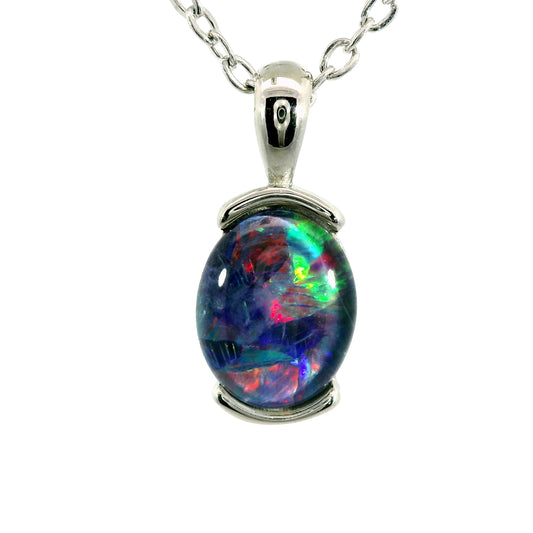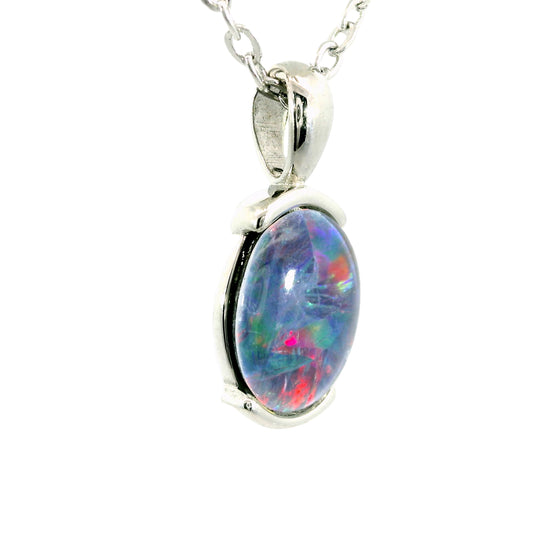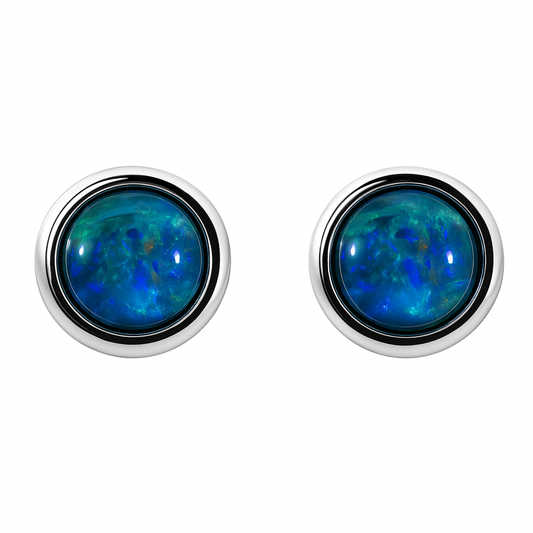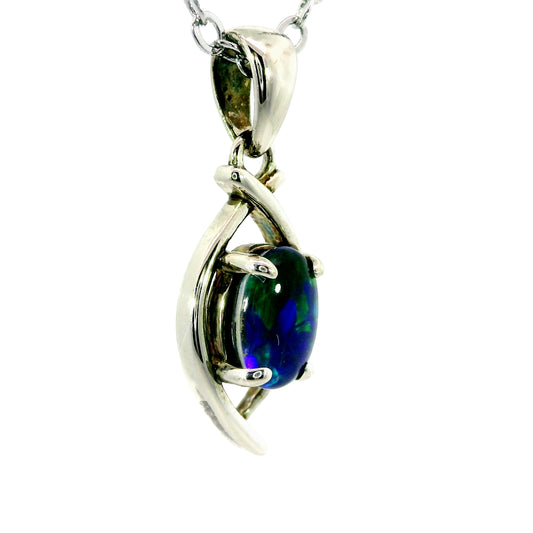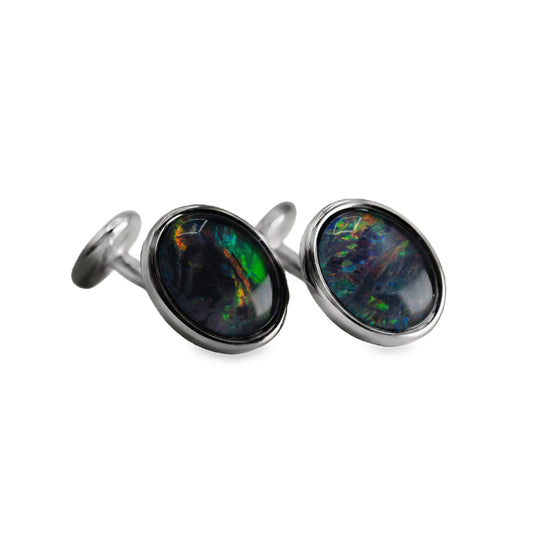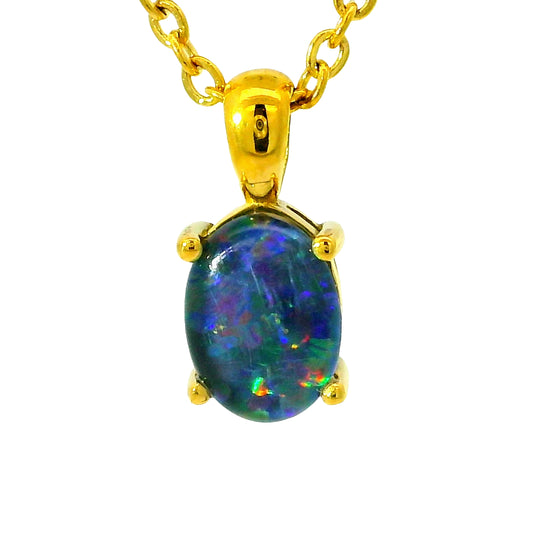Beginner’s Guide: What Are the Different Types of Opals?
Opals, with its mesmerising array of colours, has long captivated gem enthusiasts worldwide. Whether you're an avid admirer, or just a curious individual, Australian Opal Cutters has 60 years experience in the jewellery industry, and can easily guide you through the diverse world of opal varieties.

Types Of Opals
Rainbows occur within the sky due to a unique combination of water, air, and oxygen working together as light filters through, splitting into the colours observed within the rainbow arch. What is incredible with Australian Opals is that you can actually wear a ring, pendant, bracelet or earrings as a piece of jewellery that literally holds an actual rainbow…as that's what an Opal is! In extremely rare instances, these same water molecules enter the earths soil, bonding to naturally forming silica.
Opals are categorised into two main groups: Common opals, often referred to as 'potch', and precious opals, which has been referred to as 'noble opal'. These forms of opal can be found in countless lands across the world, although Australia is regarded as its 'home', as around 95% of the world's precious opal is found here.
The Difference Between Precious and Non-Precious Opals
Precious opals are often more revered for the spectrum of colours that can be observed through the stone, whereas common opal lacks this key signifier. Common opals tends to have an opaque appearance, even looking translucent or brownish in colour; this tends to go against what someone thinks of when they picture an 'opal', so these stones are often not picked. On odd occasions, however, these common opals can have bits of colour that appears appealing, which can still make for stunning jewellery pieces.
Delving Into Precious Opal
The unique nature of opals does not have to be explained. Even the quickest glance reveals the mesmerising changing colour that shifts in the light, setting opals apart from other gemstones in the jewellery market. This shifting phenomenon occurs from a process that is quite similar to how rainbows appear.
Much like how rainbows occur from sunlight scattering through water droplets in the air, opals operate through a similar diffraction of light through water and silica that is trapped inside rock formations. This formation, although the same in each opal type, creates a different outcome depending on various factors. This results in completely different stones, adding to the unique allure that opals are known for.
Black Opals
Black opals are the most expensive of opal varieties, being known for its striking colour and bold designs. The intense colour comes from the contrast formed from the darkened, or 'black', stone as a background, creating a solid foundation for which colour can be amplified upon. Predominantly sourced from Lightning Ridge, Australia, black opals are seen as the most coveted variant.
Boulder Opals
Australian boulder opals are known as the second most valuable opal type, following shortly behind black opals. Found primarily in Queensland, such an opal can be easily distinguished from other stones by the layer of brown ironstone that is often left on the back of the opal.
As the name would imply, boulder opals are mined from ironstone boulders; most of these opals will have some form of this boulder remaining, seen behind or alongside the opals face. Tragically, the majority of boulder opals must be cut away, as the colour is found only within thin veins that form within cracks and fissures; these veins remain so incredibly thin, that when the opal is cut, the ironstone that such colour is found within must be left alongside the opal in order to form a full-sized stone.
White Opals
Despite being a relatively common variant, white opals remain a prized specimen due primarily to its unique colouration, and wonderful display of colour. White opals are found within the depths of Coober Pedy, a town located in the remote outback of South Australia.
Doublet and Triplet Opals
These opals are wonderful little bundles, composed of two-three components bonded together. Doublets typically take the form of a thin opal slice affixed to a dark stone backing (typically ironstone), to mimic the natural state they are found. Triplets are similar to doublets, however with the addition of a thinner opal slice that is then crowned by a transparent domed 'cabochon', to serve as both protection and magnification. These triplets are then mounted onto a darker - almost black in appearance - backing, allowing them to emulate the striking colour achieved only by black opal. These opal types allow for an individual to still receive natural opal, with all of the stunning colour that such a title would allow, whilst adhering to something that is cost-effective.
the natural state they are found. Triplets are similar to doublets, however with the addition of a thinner opal slice that is then crowned by a transparent domed 'cabochon', to serve as both protection and magnification. These triplets are then mounted onto a darker - almost black in appearance - backing, allowing them to emulate the striking colour achieved only by black opal. These opal types allow for an individual to still receive natural opal, with all of the stunning colour that such a title would allow, whilst adhering to something that is cost-effective.
Opal's multifaceted beauty is amplified through the diverse varieties within Australia, forming countless ways to fascinate gem enthusiasts worldwide. Such an array of choice allows for opal to fully be appreciated by the greater public. Hopefully, through a wider knowledge on the types of opals, such an appreciation can further grow.











































































































